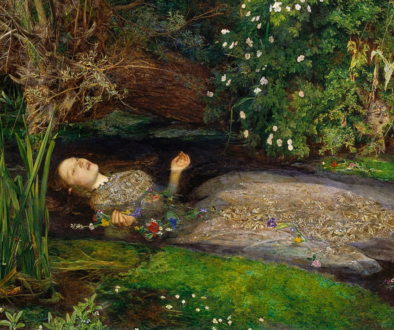My First Job
The first job I got after leaving school was to work at the British Red Cross part time.
At first, I was hesitant about the name—especially since Jehovah’s Witnesses believe that Jesus did not die on a cross and that the veneration of the cross has pagan origins, tracing back to ancient Egypt centuries before Christ’s time.
Looking up the word in Wikipedia which is a generally reliable source of information, I find there is a huge debate between scholars as to whether Jesus died on a simple stake or tree; or a T shape or a cross shape. Regardless of how Jesus died, the shape of the cross (an instrument of Jesus’ torture) is not something a Christian should wish to celebrate – surely God would view such an instrument of torture and death as an object of pain and not decoration or reverence. If your son or daughter died in a star shaped building – would you rejoice and worship the star every time you saw it? No, you would hate remembering such an object or shape of your child’s pain, let alone worship it. Especially, as we know that shortly after escaping from Egyptian slavery, God commanded his people, the Israelites, whom Jesus directly descended from, to not make any idol nor bow down to them to serve them. If the cross shape used by the Egyptians was also important to God (due to the later ransom sacrifice) – then why was he so determined that his people should not worship it?
Ex 20:4,5 clearly says: You must not make for yourself a carved image or a form like anything that is in the heavens above or on the earth below or in the waters under the earth. You must not bow down to them…
 It makes complete sense to me that if God wanted the cross worshiped – he would have stated it! And if this original ankh cross (a pagan Egyptian symbol) was sacred to him – he would have said in his original command – don’t make for yourself a carved image (with the exception of this ankh design). But he didn’t. It’s pretty clear to me.
It makes complete sense to me that if God wanted the cross worshiped – he would have stated it! And if this original ankh cross (a pagan Egyptian symbol) was sacred to him – he would have said in his original command – don’t make for yourself a carved image (with the exception of this ankh design). But he didn’t. It’s pretty clear to me.
So how did this cross creep into Christian doctrine?
What is evident is that between the third and fourth centuries, various religious beliefs and practices were merged into a unified system, later known as ‘Christianity.’ This period saw a significant blending of traditions and religious customs shaping what became the dominant faith of the Roman Empire.
“Christianity did not destroy paganism; it adopted it. The Greek mind, dying, came to a transmigrated life in the theology and liturgy of the Church; the Greek language, having reigned for centuries over philosophy, became the vehicle of Christian literature and ritual; the Greek mysteries passed down into the impressive mystery of the Mass. Other pagan cultures contributed to the syncretist result. From Egypt came the ideas of a divine trinity, the Last Judgment, and a personal immortality of reward and punishment; from Egypt the adoration of the Mother and Child, and the mystic theosophy that made Neoplatonism and Gnosticism, and obscured the Christian creed; there, too, Christian monasticism would find its exemplars and its source. From Phrygia came the worship of the Great Mother…” – Story Of Civilization Vol.3 by Durant, Will, Page 595
Back to my job – I was reassured that: The British Red Cross emblem is not related to the Christian cross. The Red Cross emblem is a symbol of protection and neutrality, and it has no religious meaning.
Instead, I discovered a well-intentioned organization filled with genuinely kind and sincere people.
The mission of the British Red Cross is to mobilize the power of humanity so that individuals and communities can prepare for, deal with and recover from a crisis, summed up by the strapline ‘refusing to ignore people in crisis’. In fulfilling this mission, all volunteers and staff must abide by the seven fundamental principles of the International Red Cross and Red Crescent Movement, which are:
Humanity: The principle of compassion and mutual aid
Impartiality: The principle of treating everyone with the same concern, regardless of their differences
Neutrality: The principle of not taking sides in conflicts or political, racial, religious, or ideological controversies
Independence: The principle of maintaining autonomy so that the Movement can act in accordance with its principles
Voluntary service: The principle of relying on volunteers to help people in need
Unity: The principle of working together to achieve the Movement’s goals
Universality: The principle of providing help to anyone in need, regardless of their location or circumstances
These principles ensured that every individual, regardless of their background, was treated with dignity and respect. I was particularly drawn to the principle of impartiality—helping people solely based on their needs, without discrimination. This aligned well with my personal beliefs as one of Jehovah’s Witnesses, as we strive to show love and kindness to all, just as Jesus did when he was on earth.
In my small administration role, I made tea and coffee, collated materials for training and did other small administrative tasks. Those overseeing my work gave me pointers on how to improve and I eventually took a couple of courses which led to gaining an administrative diploma at the West Suffolk college so as to become more proficient in my job. During my time at the British Red Cross, I also took a mini first aid course which was interesting.
Despite my initial hesitation about the name of the organization, I found that its charity work was entirely in harmony with biblical principles of helping those in need.
Looking back, my time at the British Red Cross helped shape my understanding of humanitarian work and reinforced my commitment to showing kindness and generosity in my daily life. It was a valuable experience that stayed with me long after I moved on to other opportunities.



